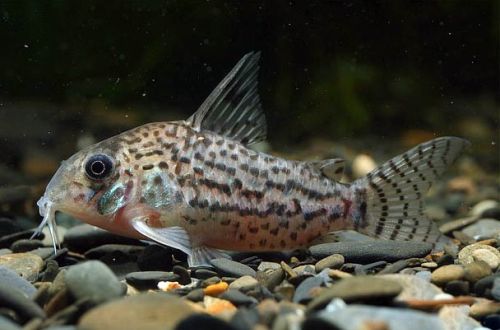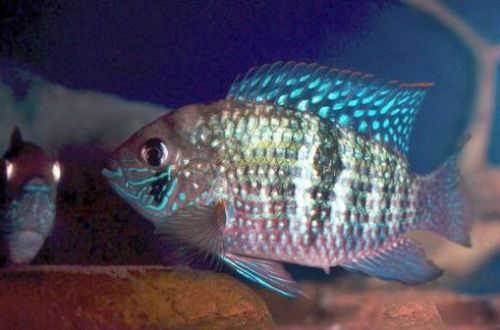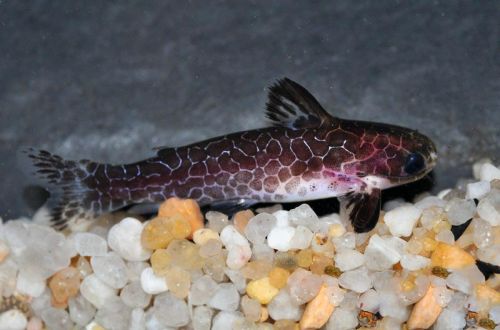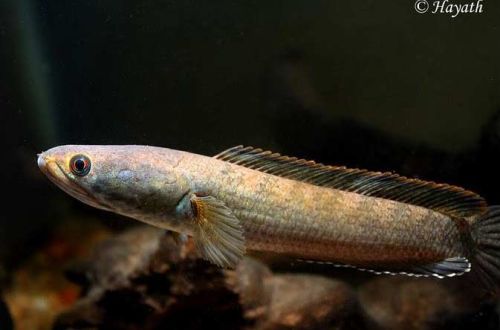
Pygmy snakehead
The pygmy snakehead, scientific name Channa gachua, belongs to the family Channidae (Snakeheads). It has a huge natural habitat, stretching from Asia, from Afghanistan and Pakistan, to Southeast Asia (the islands of Indonesia). It is found in various biotopes – it can be calm backwaters of mountain rivers, as well as tropical swamps in rain forests.

Given the size of the natural distribution area, as well as some morphological differences between populations from different regions, scientists tend to believe that 3-4 independent species can be hidden under the same name Channa gachua.
Description
Adult individuals reach a length of 10–20 cm. The fish has an elongated body shape characteristic of this genus with a large head resembling a snake.
The coloring is varied. More often monochromatic specimens are presented with a predominance of gray, brown, brownish shades. On the body, patterns of darker specks may be noticeable, as well as the presence of blue, red, orange, yellow flowers. As a rule, bright colors are present on the dorsal and anal fins.
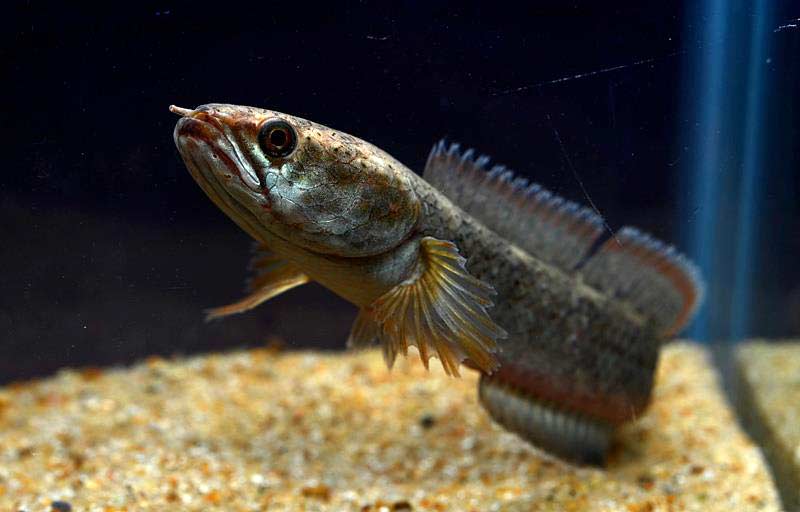
All Channa species have an additional respiratory organ that allows them to breathe atmospheric air. This ability allows them to survive in low oxygen environments or out of water for long periods of time.
Behavior and Compatibility
At a young age, fish can be in large groups. However, as they grow older (when they become sexually mature), they begin to show aggressive behavior towards relatives.
Growing up in an aquarium together, a male and a female can create a pair. In this case, the likelihood of hostility towards each other is minimized.
Pygmy snakehead predators. However, in some cases they are compatible with other species, provided that the tankmates are large enough to be eaten or considered as potential prey.
A good choice would be fish that live in the water column or near the surface. Accordingly, demersal species, such as catfish and char, are not recommended for sharing.
Brief information:
- The volume of the aquarium – from 150 liters.
- Water and air temperature – 18-28°C
- Value pH — 6.0–8.0
- Water hardness – 3–20 dGH
- Substrate type – any soft dark
- Lighting – subdued
- Brackish water – no
- Water movement – little or no
- The size of the fish is 15–20 cm.
- Nutrition – live or fresh/frozen food
- Temperament – can be aggressive, quarrelsome
- Keeping alone or in a formed pair
Maintenance and care, arrangement of the aquarium
The optimal size of an aquarium for one or two snakeheads starts from 150 liters. A significant part of the time is spent at the bottom in shelters, so the height of the tank is not significant. The minimum water level for long-term maintenance is 30 cm.
The aquarium must be equipped with a lid, as fish can crawl out of it. Between the lid and the surface of the water, it is necessary to leave an air gap for breathing.
The design welcomes the presence of shaded dark corners where the fish could hide. For example, it can be branched snags covered with aquatic mosses and dense thickets of plants.
The pygmy snakehead is able to live in a variety of environments over a wide range of temperatures and pH and GH values. Withstands temporary degradation of water quality.
Depending on the region of origin, seasonal changes in temperature may be required. For fish that come from Asia (India, Pakistan, Bangladesh), it is recommended to maintain high temperatures in the summer months, and in winter, on the contrary, reduce the temperature to room values and below.
Food
Predator, feeds on smaller fish, amphibians, insects, worms and larvae. He eats almost everything that can fit in his mouth. In a home aquarium, live or fresh food should be fed, such as pieces of fish meat, shrimp, mussels, earthworms, large bloodworms and other similar products.
Accepts dry food, but they should be used exclusively as a supplement to the main diet and act as a source of vitamins and trace elements.
Sources: FishBase, Wikipedia, Iucnredlist



